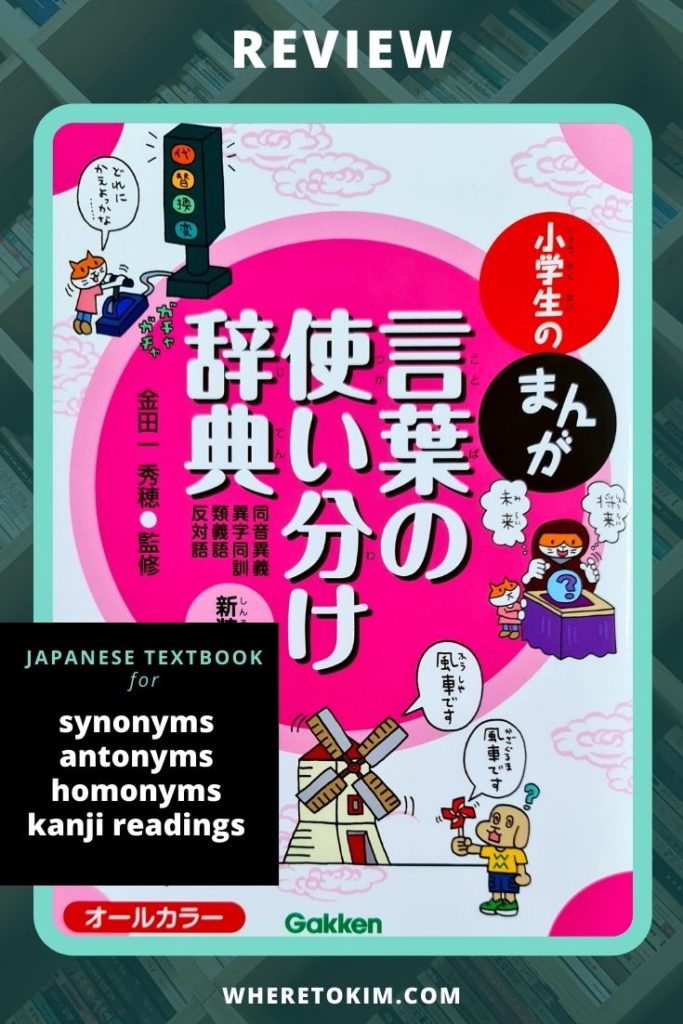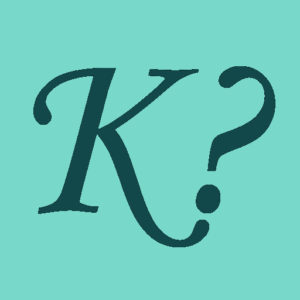The Japanese language has many words that have the same pronunciation but different meanings and/or spelling. Use this textbook to study the Kanji and readings.
Are you learning Japanese? Then this book is for you. This dictionary of words that you need to learn to tell apart is great for studying but can also be used as a reference book.
The Japanese title is: 小学生のまんが言葉の使い分け辞典 [同音異義・異字同訓・類義語・反対語].
Let’s break it apart:
- 小学生のまんが言葉の使い分け辞典: Dictionary (辞典) for the proper use (使い分け) of manga words (まんが言葉) for elementary school students (小学生). While manga is used to explain the different meanings, this book is not aimed at reading manga.
- 同音異義: homonyms and homophones, meaning words that are pronounced the same but have different meanings and/or spellings
- 異字同訓: words with different Kanji that have the same Japanese reading and a similar meaning (but different nuance)
- 類義語: synonyms, meaning words with different pronunciation and spelling that have almost the same meaning
- 反対語: antonyms, words that are opposite in meaning to each other.
Japanese level
As this book is intended for Japanese elementary school students, it is 100% in Japanese. You can start using it (with a dictionary) if you are studying for the JLPT n4 level. The grammar used is simple, the sentences are short, and the kanji have furigana. When you are at this level (or close to n3), you can use this book to study a few pages at a time to better understand the nuances of the words. After n3, this dictionary can still be very useful as a reference book. The index at the back of the book gives a good overview of homonyms/homophones, useful words with different kanji readings, and the most common synonyms and antonyms.
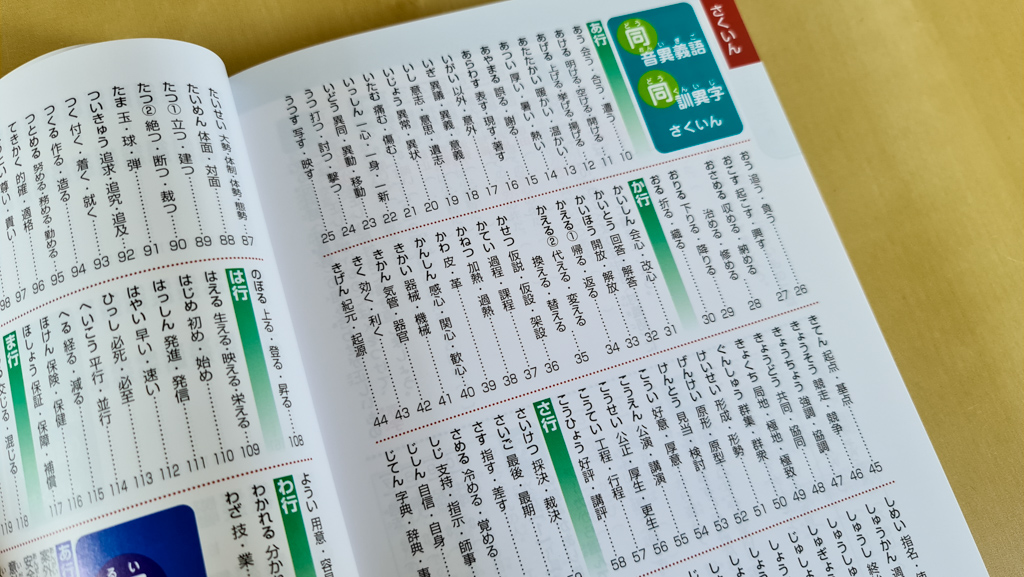
Content
Let’s take a look inside.
The book is divided into four parts. Every part starts with a short manga story explaining what you will learn from this part. The characters make puns that illustrate why it is important to understand the different meanings and readings of Japanese words.
Part 1: same reading, different kanji
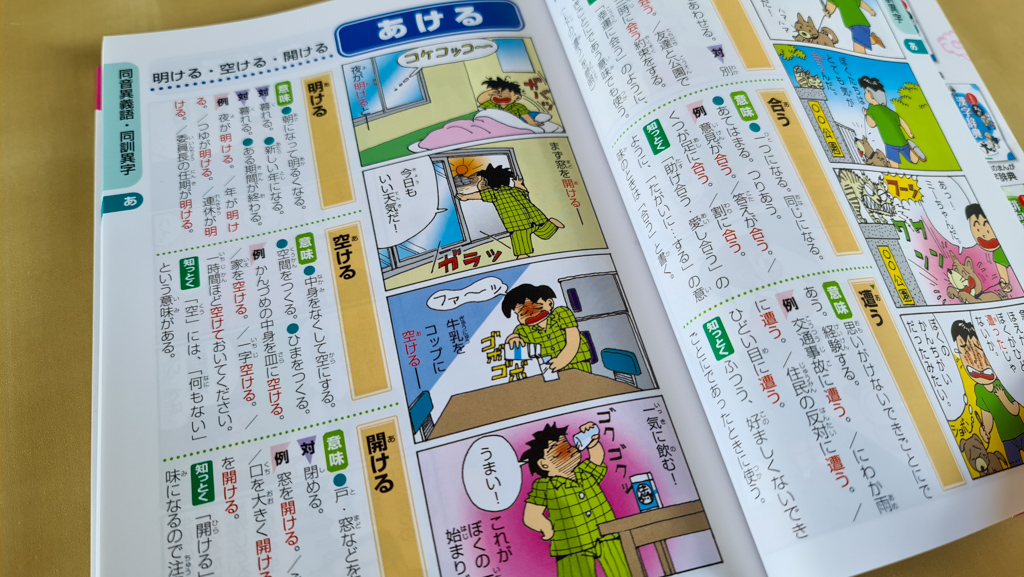
The first part is the biggest and contains 119 pages of words that have the same pronunciation but are written with different kanji. While the meanings are often similar, all words have very specific uses. Every page in this part discusses one pronunciation with two or three readings. The manga next to it illustrates some of the meanings. Both verbs and nouns are discussed.
Example: 開ける, 空ける and 明ける are pronounced as あける.
- The first one, 開ける, is commonly used for opening doors, windows, stores, or your mouth. Its antonym is 閉める (to close). And you need to keep an eye on ひらける, which is another reading for 開ける but expresses a different meaning.
- 空ける can be used when you empty the contents of something (on a plate) or when you make time for something.
- 明ける can mean that it gets bright outside. Its antonym 暮れる (くれる) means that it gets dark. You can also use 明ける to talk about a new year starting or a period ending.
Part 2: similar words with different nuances
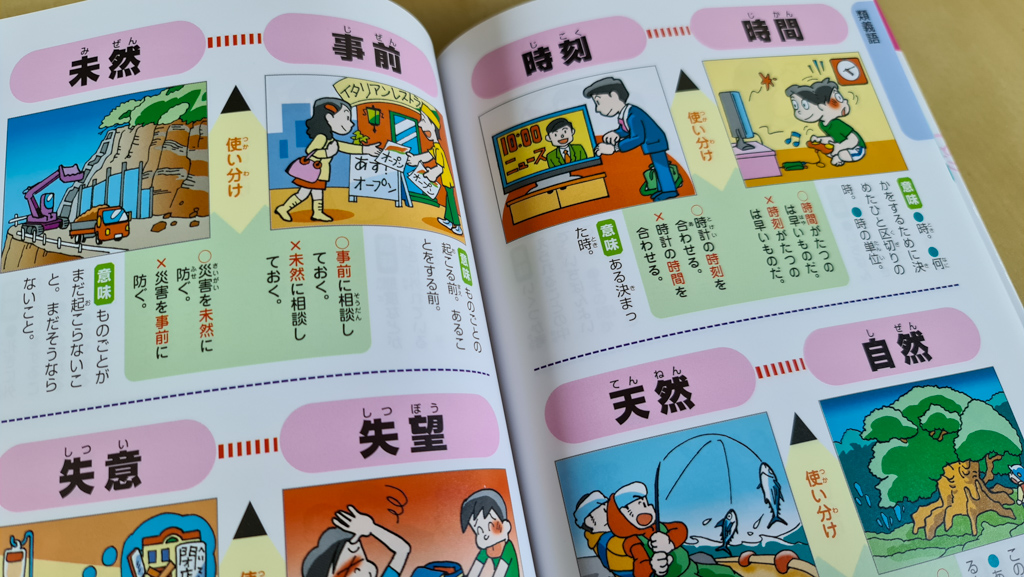
This part discusses words that appear to have the same meaning (and often have the same English translation) but are used in different situations. Each page contains two examples with explanations. 34 pages in total.
Example: 時刻 (じこく) and 時間 (じかん). Both can be translated as time, but the first points at an exact moment in time and the second can be used for a timespan.
Part 3: antonyms
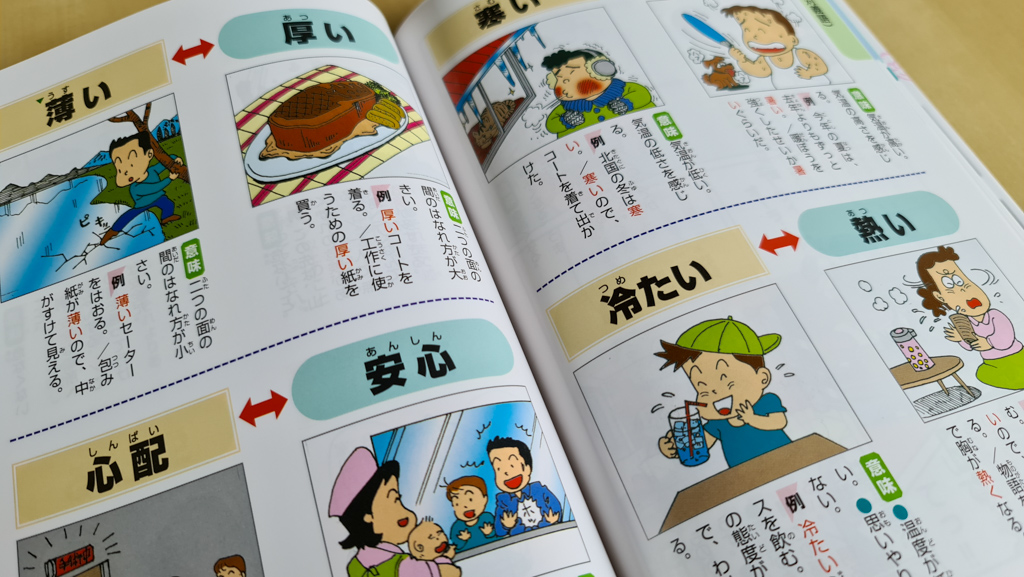
In this part, you will find 44 pages filled with antonyms (two pairs per page). Here you will build on the knowledge gained in the previous chapters, or, if you pick pages at random, you can use the explanations in the other sections to further your understanding. The same information can be absorbed in many different ways. You can search for あつい in part one and find an explanation that focuses on the readings of the kanji, or in part three and read more examples of あつい and its antonyms. In the latter case, you will see:
- 厚い meaning thick <–> 薄い (うすい) meaning thin (for objects)
- 暑い meaning hot <–> 寒い (さむい) meaning cold (weather)
- 熱い meaning hot <–> 冷たい (つめたい) meaning cold (to touch)
Part 4: same kanji, different reading
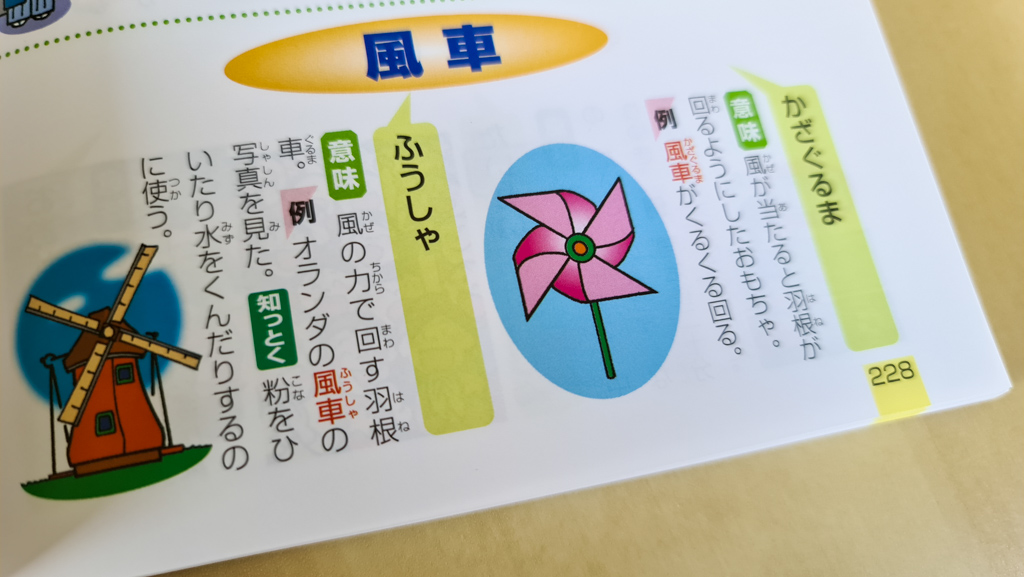
In the last part of the book, you can find examples of kanji that have different readings depending on the context. This list is not exhaustive (17 pages, three per page), but it will get you started.
Example: 風車 can be read as ふうしゃ meaning windmill or かざぐるま meaning pinwheel (the toy).
Opinion
Useful content
This dictionary is ideal for studying the Japanese language. The sentences in the book are easy enough and a beginner – lower average student of Japanese should be able to understand the grammar. There are enough examples so that you can understand some of the nuances and begin to understand what meaning and word is used in what situation. The chapters provide a high-level overview and are not overwhelming for those who have only recently started learning Japanese. This also means that this book is not a good resource for the advanced learner, as it lacks the details that someone at that level needs. The publisher, Gakken, focuses on the most common words: words that are essential in basic conversations.
Entertainment
Aside from the useful content, this book is also a lot of fun. The puns are funny if you’re in the right mood, and the manga is entertaining to read. However, it is not a manga book: the manga is secondary to explaining the principles. There is no overarching story, only fragments that focus on imparting knowledge.
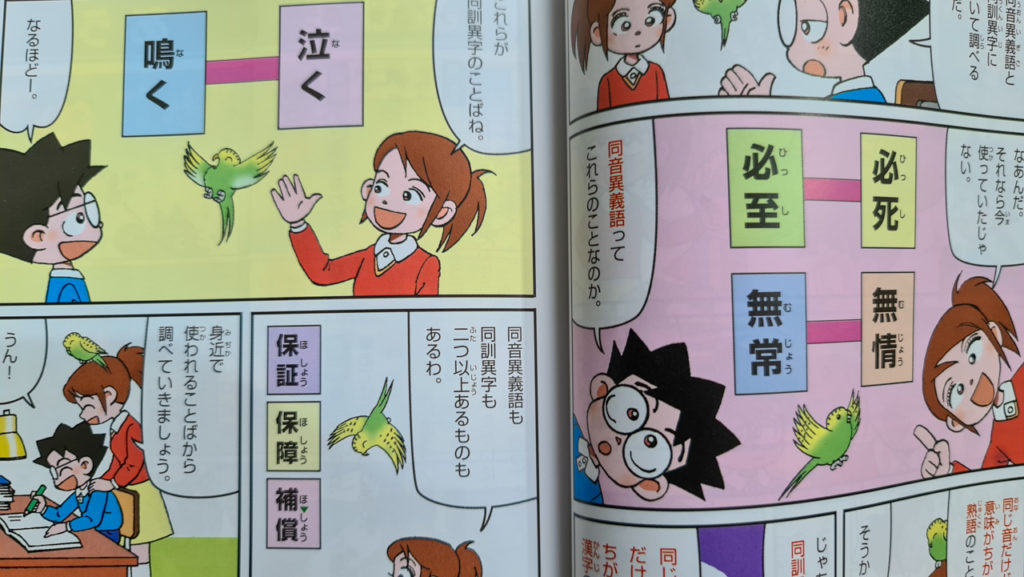
Reading practice
Because you are studying the concepts in Japanese, you get some reading practice as a bonus. You will see that once you drop the English textbooks in favor of Japanese textbooks, your Japanese improves much faster. It’s hard at first, but more rewarding in the end. Books for Japanese elementary school children excel at captivating their audiences and – let’s never admit it – foreign adults as well.
Interested?
Get your copy from Amazon.co.jp. International shipping costs and import taxes may be high, but for me (shipping to the Netherlands) it was still cheaper than ordering it elsewhere.
In the same order I also bought a Kanji dictionary for elementary school kids, which I will review later, and three parts of しろくまカフェ (Shirokuma Cafe manga). They’re also great for Japanese learners at beginner level or lower intermediate level.
